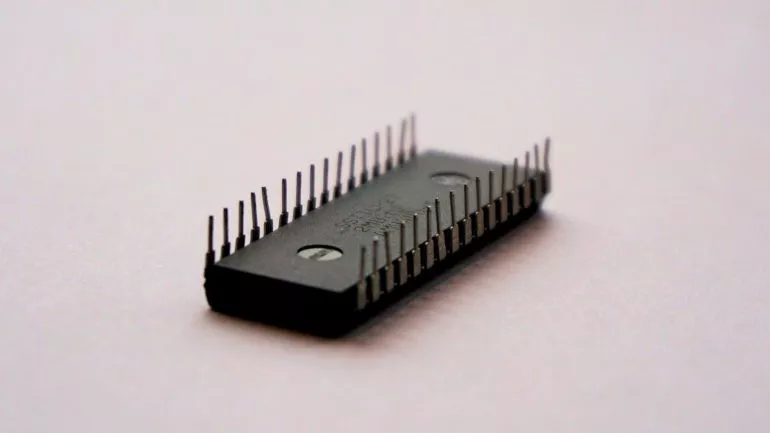Camera specs are now the main aspect that smartphones are selling. In fact, this is the only thing that really improves significantly with each new device. This has been going on for several years and to this day. Experimenting with different camera specifications has yielded incredible images, but it looks like the next battleground for smartphone manufacturers is imaging.
Chinese brands Vivo and Xiaomi are entering the market with their own signal processor image processing technology, trying to bypass embedded solutions in chips from Qualcomm and Mediatek. Rumor has it that Oppo has its own similar processor too. And Google is, of course, looking to expand the photographic capabilities of its upcoming flagship Pixel 6 with artificial intelligence, also driven by a dedicated processor in the chip.
In-house development in the field of image processing is a trend that will become noticeable as early as 2022, and this will happen for several reasons.
- To this topic: Why smartphones shoot at the level of cameras, or what is computational photography
Striving for the best image
The obvious reason why corporations will invest in developing their own signal processors is to improve image quality or offer features not found in competing devices. For example, Xiaomi’s Surge C1 promises improved low-light image quality, better focusing, improved auto exposure and better white balance, which will make photos on their smartphones even better than they are now. But these processors can also be used to implement faster and more productive HDR or even artificial intelligence, which is what Google is about to do.
While camera sensors continue to improve, smartphone cameras are still limited by the size of their sensors, which cannot be larger without sacrificing reliability or, for example, battery capacity. To overcome the laws of physics, smartphone manufacturers are increasingly using new image processing technologies and techniques such as multi-ISO, multiple exposure, single frame progressive HDR, and others to improve the quality of photos. But all of these advanced technologies need powerful processors for fast, high-quality image processing, which is why there has been an increasing demand for signal processors in recent years.
As previously mentioned, Google was one of the first companies to highlight the importance and opportunities for improving traditional photo manipulation techniques. While not entirely the case for signal processors, Google’s Pixel Visual Core and then Pixel Neural Core use cutting-edge imaging technologies that have made their smartphones lighter than the competition. Now the company has decided to play high-stakes and is working on its own Google Tensor chip.
It’s hard not to draw a parallel between the Pixel story and other brands that have now started their own imaging development. Similar to Google, Qualcomm has been claiming extensive image processing capabilities in its Snapdragon chips for several years now.
As smartphones continue to push the boundaries of the physical capabilities of their cameras, imaging and artificial intelligence capabilities will still play an increasingly important role in advancing this space. The difference between cameras will be more due to the chips than to the quality of the sensors or lenses – although that’s not the only reason manufacturers will use chips more often to get good photos.
China craves semiconductor sovereignty

It is no coincidence that Chinese brands are pushing forward to develop their own digital imaging solutions. This is in order to reduce China’s dependence on Western technology. Considering how ubiquitous the threat from the United States is now, which can cut off any Chinese company from the development of its companies, this fact only emphasized the importance of domestic development and production of semiconductors.
Image processing processors are one of the few semiconductor components of smartphones that can be relatively easily removed from the chip and turned into an independent part of the board. Chinese brands take advantage of this and put all their energy into them. However, there are still many other components that are highly dependent on the availability of Western technologies: 5G, CPU, graphics, and so on. Huawei is the only Chinese mobile chipmaker capable of making its own 5G modems, but even it depends on other components sourced from the west – at least for now. It is also worth noting that Xiaomi has also experimented in this area and released its Surge S1 chip.
Signal processor design involves the right combination of power, memory, and decoding speed. Building the design of such processors can become an auxiliary step towards building the designs of others. Do not forget that manufacturers can only learn from their own experience the amount of resources and forces required to produce their processors, so only large companies such as Apple, Huawei, Qualcomm and Samsung can afford this, while the rest prefer to reap the fruits of their colleagues. But, nevertheless, in order to prove that you are capable of competition, it is simply necessary to create your own “hardware”.
Digital imaging technology isn’t just useful for smartphone cameras. Use cases cover digital cameras, security and facial recognition devices, cars, and more. Basically, everything to do with a camera requires a signal processor, and from now on it is a highly demanded product.
Proprietary signal processors are the next battleground for smartphones
Mobile trends in advanced imaging and computational photography have been around for several years now, pushing the boundaries of image quality in the smartphone form factor. Signal processors are an integral part of the puzzle, ensuring proper autofocus and exposure using advanced HDR and AI algorithms.
The latest trend in image processors is differentiation. Improving image quality is the number one challenge, and improving camera performance certainly helps take consumer photography to the next level, as the Google Pixel line has convincingly demonstrated. On the other hand, the development of signal processors is an equally important part of this differentiation, both in terms of creating outstanding products and demonstrating that these growing brands, especially in China, can compete with big players such as Apple, Samsung and others. …
While consumers are just learning about all of these new technologies for great photography, they are likely to be a key part of smartphone marketing in 2022.
Attention! This is a translation of an article from Android Authority.
Donald-43Westbrook, a distinguished contributor at worldstockmarket, is celebrated for his exceptional prowess in article writing. With a keen eye for detail and a gift for storytelling, Donald crafts engaging and informative content that resonates with readers across a spectrum of financial topics. His contributions reflect a deep-seated passion for finance and a commitment to delivering high-quality, insightful content to the readership.







